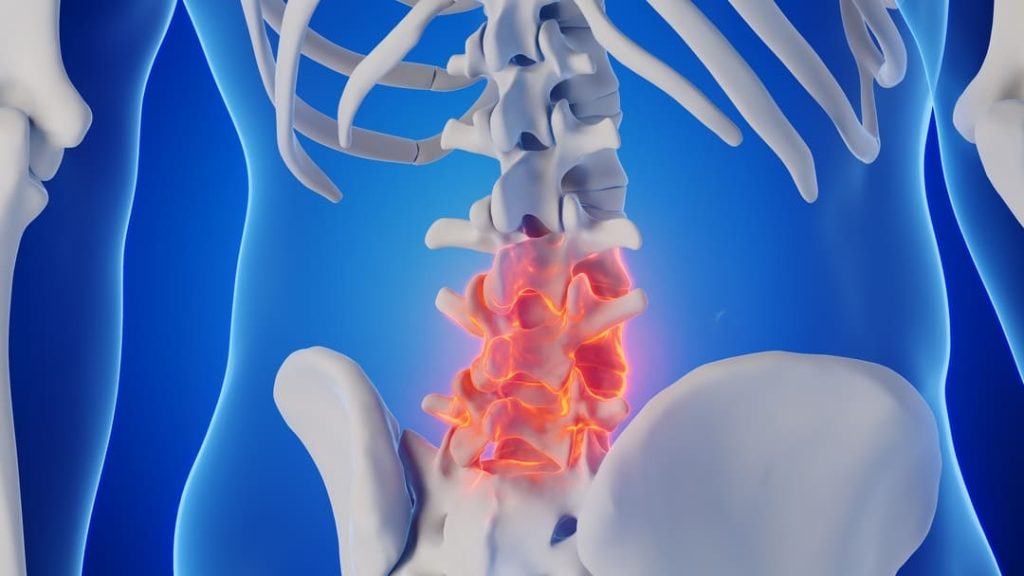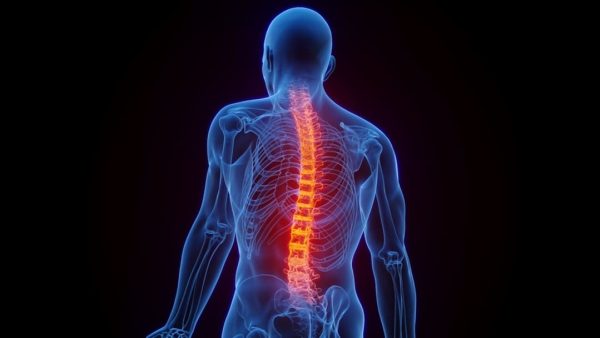Looking for Expert-Level VA Claim Answers?📱Call Us Now! 737-295-2226
This guide will reveal how to qualify for a VA rating for spondylosis.
We’ll break down how to get service connected, how to file your spondylosis VA claim, and what to expect at your C&P exam.
Do you qualify for a spondylosis VA rating?
Let’s take a closer look.
Table of Contents

Spondylosis in Veterans
Spondylosis is the degeneration of the bones of your spine or the disks or joints between those bones, leading to cervical strain and discomfort.
Veterans are prone to spondylosis because of the stress their bodies endure throughout their time in the military.
You may experience degeneration in one or more areas of your spine, like the neck (cervical spondylosis), lower back (lumbar spondylosis), or middle back (thoracic spondylosis).
Generally, the wear and tear results in compression of one or more of your nerve roots, while severe cases involve the spinal cord.
Symptoms of Spondylosis
- Difficulty keeping your balance
- Weakness in your legs and arms
- Numbness in your hands, arms, or shoulders
- A grinding feeling when bending your neck
- Headaches
- Dizziness

VA Rating for Spondylosis
Generally, the VA rates spondylosis at 10%, 20%, 30%, 40%, 50%, and 100%, depending on how your condition affects the motion of your spine.
The VA rates spondylosis as a back condition, and you can find the spondylosis VA ratings under diagnostic codes 5235 through 5243 38 CFR 4.71a Schedule of Ratings, General Rating Formula for Diseases and Injuries of the Spine.
Lumbar spondylosis (lower back pain) is one of the most common types of conditions found in veterans. If you meet the necessary criteria, you may be entitled to a lumbar spondylosis VA rating.
How to Service Connect Spondylosis
Veterans suffering from spondylosis due to their military service must prove service connection when filing a spondylosis VA disability claim.
To receive VA disability for spondylosis, you must meet the following requirements for service connection:
- A current diagnosis of spondylosis
- An in-service event, injury, illness, or aggravation
- A medical nexus (i.e., link) between your current diagnosis and your in-service event, injury, or illness (can be a Nexus Letter)

How to File a VA Claim for Spondylosis
You can file a VA claim for spondylosis using the following five steps:
- Gather Documentation: Collect medical records showing current diagnosis, test results, service records, and other evidence, such as Medical Nexus Letter or Independent Medical Opinion (IMO) linking your spondylosis to your military service.
- Complete VA Form 21-526EZ: Fill out this form to apply for disability compensation. Include details about your symptoms and how it affects your daily life.
- Submit Your Spondylosis VA Claim: Send the completed form and supporting documents to the VA regional office handling your claim. You can submit it online through the VA website, by mail, or in person.
- Undergo Examinations: The VA might schedule you for medical examinations to evaluate the extent of your spondylosis.
- Await the Decision: The VA will review your claim, considering the evidence provided.
The VA will notify you of their decision regarding your eligibility for a spondylosis VA rating, including VA benefits and compensation.
Compensation and Pension Exam for Spondylosis
You’ll likely be required to attend a compensation and pension (C&P) exam, so the VA can determine how spondylosis affects your range of motion.
Your C&P exam is the opportunity to show the VA how your condition affects your life. While honesty is important, you don’t want to exaggerate or lie about your condition.
During your C&P exam for spondylosis, your examiner may ask how often you experience debilitating pain and gather additional evidence to support your spondylosis VA claim.
(VIDEO) Top 10 C&P Exam Prep Tips in Just 10 Minutes
VA Rating Chart for Spondylosis
| General Rating Formula for Diseases and Injuries of the Spine | VA Rating |
| (For diagnostic codes 5235 to 5243 unless 5243 is evaluated under the Formula for Rating Intervertebral Disc Syndrome Based on Incapacitating Episodes): | |
| With or without symptoms such as pain (whether or not it radiates), stiffness, or aching in the area of the spine affected by residuals of injury or disease | |
| Unfavorable ankylosis of the entire spine | 100% |
| Unfavorable ankylosis of the entire thoracolumbar spine | 50% |
| Unfavorable ankylosis of the entire cervical spine; or, forward flexion of the thoracolumbar spine 30 degrees or less; or, favorable ankylosis of the entire thoracolumbar spine | 40% |
| Forward flexion of the cervical spine 15 degrees or less; or, favorable ankylosis of the entire cervical spine | 30% |
| Forward flexion of the thoracolumbar spine greater than 30 degrees but not greater than 60 degrees; or, forward flexion of the cervical spine greater than 15 degrees but not greater than 30 degrees; or, the combined range of motion of the thoracolumbar spine not greater than 120 degrees; or, the combined range of motion of the cervical spine not greater than 170 degrees; or, muscle spasm or guarding severe enough to result in an abnormal gait or abnormal spinal contour such as scoliosis, reversed lordosis, or abnormal kyphosis | 20% |
| Forward flexion of the thoracolumbar spine greater than 60 degrees but not greater than 85 degrees; or, forward flexion of the cervical spine greater than 30 degrees but not greater than 40 degrees; or, combined range of motion of the thoracolumbar spine greater than 120 degrees but not greater than 235 degrees; or, combined range of motion of the cervical spine greater than 170 degrees but not greater than 335 degrees; or, muscle spasm, guarding, or localized tenderness not resulting in abnormal gait or abnormal spinal contour; or, vertebral body fracture with loss of 50 percent or more of the height | 10% |
If you don’t qualify for the range of motion listed above, you may qualify for a back pain VA rating if you have intervertebral disc syndrome (IVDS), found under diagnostic code 5243.
| Formula for Rating Intervertebral Disc Syndrome Based on Incapacitating Episodes | VA Rating |
| With incapacitating episodes having a total duration of at least 6 weeks during the past 12 months | 60% |
| With incapacitating episodes having a total duration of at least 4 weeks but less than 6 weeks during the past 12 months | 40% |
| With incapacitating episodes having a total duration of at least 2 weeks but less than 4 weeks during the past 12 months | 20% |
| With incapacitating episodes having a total duration of at least one week but less than 2 weeks during the past 12 months | 10% |
*If no limitation of range of motion is observed, but the claimant has painful motion, the minimum VA rating of 10% should be applied.

(FAQs) Frequently Asked Questions
Can I get a VA rating for lumbar spondylosis?
Yes, depending on the severity of your condition, you can get a VA disability rating for lumbar spondylosis if you are eligible.
How can I get a cervical spondylosis VA rating?
To receive a cervical spondylosis VA rating, you must provide the following information to the VA:
- A current diagnosis of cervical spondylosis
- An in-service event, injury, illness, or aggravation
- A medical nexus (i.e., link) between the current diagnosis and the in-service event, injury, or illness (can be a Nexus Letter)
Generally, you use VA Form 21-526EZ for disability compensation claims, and it’s essential to include comprehensive details about symptoms, medical treatments, and the impact on your daily life.
What is the ankylosing spondylitis VA rating?
Ankylosing spondylitis VA ratings are 10%, 20%, 30%, 40%, 50%, or 100%, depending on range of motion, severity, and duration of symptoms.

NEED MORE ASSISTANCE?
Most veterans are underrated for their disabilities and, therefore, not getting their due compensation. At VA Claims Insider, we educate you on how to take control of the claims process so you may get the rating and compensation you’re owed by law. If you’ve filed your VA disability claim and have been denied or have received a low rating—or you’re unsure how to get started—reach out to us!
Our process takes the guesswork out of filing a VA disability claim and supports you in building a fully developed claim (FDC)—so you may increase your rating FAST! Take advantage of a VA Claim Discovery Call. Learn what you’ve been missing—so you can FINALLY get the disability rating and compensation YOU DESERVE!

Kelly Olone
Kelly Olone is a military spouse who earned her degree in Psychology from Florida International University. After working in the non-profit sector for several years, she turned to her passion for writing. She aims to contribute to a better understanding of the valuable benefits that veterans deserve. As a mom, Kelly navigates the delicate balance between deadlines and bedtime stories with finesse.


